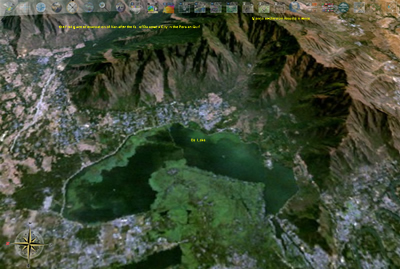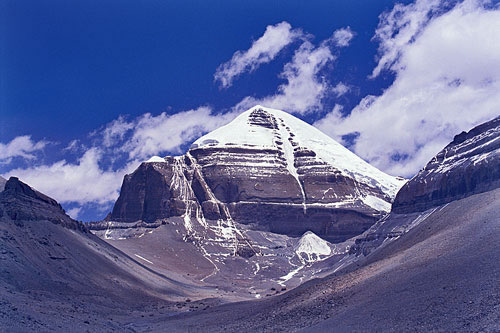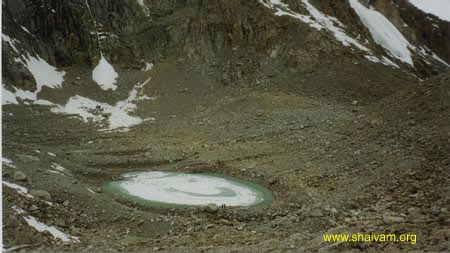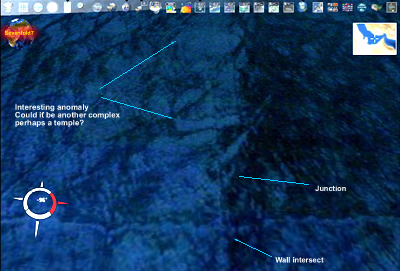Lake Dal situated in North Western India
The Journey to Lake Dal, in North Western India to seek out the truth of the first place of evacuation of Van after the falll of Dalamatia City. Varuna reflected as Van.
I believe this is the location of the the first evacuation of Van after the Fall of Dalamatia City. This is the place where the tree of life was kept temporarily in the mountains North East of Lake Dal or even about the shores of lake Dal, The first headquarters of Van.
Here is an excellent Video of the location in Srinagar, North Western India where Van evacuated soon after the demise of Dalamatia City.
Van and the loyal ones escaped to the end of the world and this area for time memorial is related to the place of the Gods and the tree of life was present here for a time before settling in the Iranian Headquarters of Van civilisation.
The Urantia Book Paper 67
The followers of Van
early withdrew to the highlands west of India,
where they were exempt from attacks by the confused races of the
lowlands, and from which place of retirement they planned for the
rehabilitation of the world as their early Badonite predecessors
had once all unwittingly worked for the welfare of mankind just before the
days of the birth of the Sangik tribes
Link
and Paper 66
excerpt
Among the later students trained in Mesopotamia for work with their respective
races were Andonites from the highlands of western
India together with representatives of the red men and the blue
men; still later a small number of the yellow race were also received.
and
PAPER 64 - THE
EVOLUTIONARY RACES OF COLOR, Oct 19 2000
-
3. THE BADONAN TRIBES
Besides the Foxhall peoples in the west, another struggling center of culture persisted in the east. This group was located in the foothills of the northwestern Indian highlands among the tribes of Badonan, a great-great-grandson of Andon. These people were the only descendants of Andon who never practiced human sacrifice.
These highland Badonites occupied an extensive plateau surrounded by forests, traversed by streams, and abounding in game. Like some of their cousins in Tibet, they lived in crude stone huts, hillside grottoes, and semiunderground passages.
While the tribes of the north grew more and more to fear the ice, those living near the homeland of their origin became exceedingly fearful of the water. They observed the Mesopotamian peninsula gradually sinking into the ocean, and though it emerged several times, the traditions of these primitive races grew up around the dangers of the sea and the fear of periodic engulfment.
And this fear, together with their experience with river floods, explains why they sought out the highlands as a safe place in which to live.
To the east of the Badonan peoples, in the Siwalik Hills of northern India, may be found fossils that approach nearer to transition types between man and the various prehuman groups than any others on earth.
-
line 65: 850,000 years ago the superior Badonan tribes began a warfare of extermination directed against their inferior and animalistic neighbors. In less than one thousand years most of the borderland animal groups of these regions had been either destroyed or driven back to the southern forests. This campaign for the extermination of inferiors brought about a slight improvement in the hill tribes of that age. And the mixed descendants of this improved Badonite stock appeared on the stage of action as an apparently new people--the Neanderthal race.
http://mercy.urantia.org/papers/paper62.html
PAPER 62 - THE DAWN RACES OF EARLY MAN
About one million years ago the immediate ancestors of mankind made their appearance by three successive and sudden mutations stemming from early stock of the lemur type of placental mammal. The dominant factors of these early lemurs were derived from the western or later American group of the evolving life plasm. But before establishing the direct line of human ancestry, this strain was reinforced by contributions from the central life implantation evolved in Africa. The eastern life group contributed little or nothing to the actual production of the human species.
1. THE EARLY LEMUR TYPES
The early lemurs concerned in the ancestry of the human species were not directly related to the pre-existent tribes of gibbons and apes then living in Eurasia and northern Africa, whose progeny have survived to the present time. Neither were they the offspring of the modern type of lemur, though springing from an ancestor common to both but long since extinct.
While these early lemurs evolved in the Western Hemisphere, the establishment of the direct mammalian ancestry of mankind took place in southwestern Asia, in the original area of the central life implantation but on the borders of the eastern regions. Several million years ago the North American type lemurs had migrated westward over the Bering land bridge and had slowly made their way southwestward along the Asiatic coast. These migrating tribes finally reached the salubrious region lying between the then expanded Mediterranean Sea and the elevating mountainous regions of the Indian peninsula. In these lands to the west of India they united with other and favorable strains, thus establishing the ancestry of the human race.
With the passing of time the seacoast of India southwest of the mountains gradually submerged, completely isolating the life of this region. There was no avenue of approach to, or escape from, this Mesopotamian or Persian peninsula except to the north, and that was repeatedly cut off by the southern invasions of the glaciers. And it was in this then almost paradisiacal area, and from the superior descendants of this lemur type of mammal, that there sprang two great groups, the simian tribes of modern times and the present-day human species.
2. THE DAWN MAMMALS
A little more than one million years ago the Mesopotamian dawn mammals, the direct descendants of the North American lemur type of placental mammal,
The location of the location of the Home of Andon and Fonta and the Badonites including the first evacuation places of Van after the downfall of Dalamatia City.
The highland
plateau of the origins of mankind
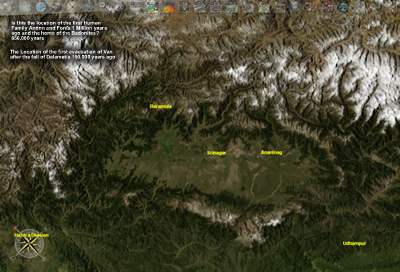
Lake Dal could possibly be
Another temporary temple of the tree of life after the fall of Dalamatia
In them there hills we may find reflections of Hindu including Tibetan legends of
reflective of Van and Amadon.
Dal lake sounds very similar to the first syllable of Dalamatia, first
syllable being Dal, like Lake Dal. This could be the clue to the first
evacuation place of Van after the rebellion in Dalamatia 150,000 years ago.
Lake Dal could be the reflection from Van, Like Lake Van. All very similar
words to our origins and has relevance to the discoveries.
Link
Also note that this location appears to be a lake within a triangular mountain
formation, Similar to what we see in Jesus tomb
http://www.dalamatiacity.com/urantia-clues10.htm#Jesus
and also this connects with the triangles and diamond shapes in Dalamatia City
http://www.dalamatiacity.com/../persian_gulf/index.htm
This location appears to have all the shape characteristics, truly the end of
the world.
http://www.dalamatiacity.com/../persian_gulf/index.htm
There must be some reflection of this in the people and in the myths, religions and legends, the search begins.
http://www.ignca.nic.in/nl_007_2.htm
An extract about the Gaddi who live in that area and how in the religion and practice perhaps mimics a practice that the followers of Van employed right from the first times 150,000 years ago.
The most fascinating data on how a Gaddi gives symbolic meaning to the place he inhabits comes form various legends associated with Chaurasi - a temple complex at Bharmaur. Chaurasi, which according to a popular belief contains eighty four shivalingas, represents the celestial kingdom both at the micro and the macro level and to the wise or to those with deep inner vision the real and the pure celestial kingdom is perceivable. Thus, Chaurasi is not a mere reflection or a replica of the original kingdom, but it is in fact the real celestial kingdom. It is immortal and remains intact during the cosmic dissolution. Chaurasi is also both a cosmic and a temporal space.
Origin myths of the Gaddis explain the origin of the world from the Kalasa and the Mulavriksha. First a Banyan tree appeared in the Kalasa. the upper portion got trnasformed into three faces of Brahma, Vishnu and Mahesh. The lower part of the tree became Prithvi (Earth), on which later appeared Rishis and Gurus.
In one of the myths Brahma first created a man of Gold, but it would not breathe, no matter how much Brahma blew into his mouth. The same fate was met with man made of silver and copper. Brahma then took a small pice of earth (Mitti), created a human form out of it and blew into his mouth and the form became alive.
The Gaddi was created from a speck of dust ffrom Shiva's body. The act of creation took place when Shiva was seated on his royal seat (Gaddi) and hence the name Gaddi was given to his human form. Shiva later gave the Gaddi his own garb and a flock off sheep to tend.
The Mani-Mahesh mountain, situated 36km. north-east of Bharmaur village, is said to be the abode of Lord Shiva, where he lives with his wife Mata Gorja, at his benvolent best. Mani Mahesh is worshipped as Mount Kailash and a pilgrimage to the holy lake Dal, situated at it's feed, takes place annually.
Mani-Mahesh was revealed to the human eye for the first time when a leper king, came to Chaurasi to worship Shiva. Shiva not only cured him of his disease and gave his his garb (traditional Gaddi dress), but also revealed the grandeur and splendour of his Kailash to him.
Shiva is believed to reside at Mani-Mahesh for a period of six months and then migrate to Piyalpuri (the netherland) during winter. The migratory pattern of Gaddis coincides with the migratory period of their main deity - Lord Shiva. The Gaddi notions of Space and Time as well as their eco-socio-cultural configurations are conceptually derived form this upward downward movement of Lord Shiva. the Gaddi annual calendar of activities is accordingly divided into two halves and represents two distinct modes of life during the summer months at Bharmaur and high passes of the Dhauladhar, and winter months in the valley of Kangra.
The Mani-Mahesh Jatar (pilgrimage) is one of the most important events of Gaddi festival calendar. Through this Jatar the Gaddi not only celebrates his socio-cultural and moral order but attempts to transcend this order, going beyond the boundaries of mundane space and time in order to be one with the cosmic realm of Lord Shiva - the Lord of the Dhauladhar. This pilgrimage brings together people from all over Gadderan, binding them with one faith and one identity - the Gaddi, as he is and as we should know him.
Here is another reflection that may have distant reflections of Van and Amadon and there followers but may have been perverted along the way.
http://www.kashmir-tourism.net/jammu-kashmir/hari-parbat-fort.html
The Mughal fort situated on the banks of the Dal Lake of Srinagar, it is positioned on top of the Sharika Hill. Originally, it was built during the reign of Akbar but its present structure owes itself to the Afghan governor of Kashmir in the 18th century. It has a Parvati temple on the western slope and the Muslim shrines of Khwaja Makhdoom Sahib and Akhund Mullah Shah on the southern one. On the southern side of the outer wall there is a Guru Dwara, which commemorates the visit of Guru Hargobind Singh. Presently the fort is under army occupation. According to the local legend, this hill was once a lake as large as a sea and was inhabited by the abominable demon known as Jalobhava. The inhabitants called on Goddess Sati, spouse of Lord Shiva for her help. She took the form of a bird and dropped a pebble on the demon's head, which kept on increasing in size until the demon was crushed by it. Hari Parbat is revered as that pebble and it is said to have become the home for all 33 crore gods of the Hindu pantheon.
Another version of the myth that involves the hill, says that two demons, Tsand and Mond occupied the fair valley. Tsand conceded himself in water near the present location of Hari Parbat and Mond somewhere above the present Dal Gate. They were a menace to the people of the valley, which could not be inhabited owing to their dreaded presence. Thus, the gods invoked Goddess Parvati who assumed the form of a Hor (myna) and flew to Sumer Dalalmatia City? from where she got a pebble in her beak 7 commands and threw it on the demon Isand to crush him. The pebble grew into a mountain.(Daniel) She is worshipped as Sharika in Shri Tsakra (an emblem of cosmic energy pervading the universe) occupying the middle part of the western slope of the hill. The hill is also called Predemna Peet or Kohi Maran. Akbar the Great built the outer wall of the fort in 1590 at a cost of one crore and ten lakh of rupees. The inscription in Persian at the Kathi Darwaza commemorating this work can be read even today. Akbar intended to lay the foundation of a new capital inside the fort and call it Nagar Nagor. The ruins of certain terraces can still be seen on the side of the Pokhiri Bal. The views of the Dal lake and a part of the valley from the fort are spectacular.
Rigvedic myths, the seven rivers in metaphor could reflect this journey for mankind. The most important journey for mankind. All various reflections of Sevens and the the ancient places could be reflected in this religion and including Van and his two headquarters as reflected in the people who still live there legends in their life and traditions as in the Gaddis.
Identity of the seven rivers
It is unclear how exactly the seven rivers were intended to be enumerated. They are often located in the Punjab region in northwestern India / northern Pakistan. If Sarasvati's membership is taken for granted, and the five major rivers of the Punjab are included (Sutudri, Parusni, Asikni, Vitasta, Vipas all tributaries of Sindhu), one river is missing (or perhaps two, since the Sindhu is a special case, having feminine or masculine gender and in this case not being invoked as a goddess), perhaps Arjikiya or Sushoma compare also the list of ten in the Nadistuti sukta, RV 10.75. David Frawley extends the Sapta Sindhu region from the Punjab to the Gangetic plain, specifically suggesting Sindhu, Ashikni, Parushni, Sarasvati, Yamuna, Ganga and Sarayu. (Frawley 2000) In 6.61.10, Sarasvati is called "she with seven sisters" (saptasvasā) which would logically indicate a group of eight rivers, but which probably is just due to the number seven being more important than the individual members (see also saptarshi, haft keshvar), so that the list of the Sapta sindhu may not have been fixed or immutable. In RV 10.64.8 and RV 10.75.1, three groups of seven rivers are referred to (tríḥ saptá sasrâ nadíyaḥ "thrice seven wandering rivers"), as well as 99 rivers.
http://en.wikipedia.org/wiki/Sapta_Sindhu
The central myth of the Rigveda tells of Indra (the "Bull") freeing the Seven Rivers with the slaying of Vrtra (the "Dragon"):
- 1.32.12 Thou hast won back the kine, hast won the Soma; thou hast let loose to flow the Seven Rivers.
- 1.102.2 The Seven Rivers bear his glory [Indra's] far and wide, and heaven and sky and earth display his comely form.
- 2.12.3 Who slew the Dragon, freed the Seven Rivers, and drove the kine forth from the cave of Vala
- 4.19.3 The Dragon stretched against the seven prone rivers, where no joint was, thou rentest with thy thunder.
- 4.28.1 Slew Ahi, and sent forth the Seven Rivers, and opened as it were obstructed fountains.
- 7.18.24 Seven flowing Rivers glorify like Indra. He slew Yudhyamadhi in close encounter.
- 8.24.27 Who will set free from ruinous woe, or Arya or the Seven Streams:
- 8.96.1 For him the Floods stood still, the Seven Mothers, Streams easy for the heroes to pass over.
- 10.49.9 Bull over all the streams that flow along the earth, I took the Seven Rivers as mine own domain.
- 10.67.12 Slain Ahi, and set free the Seven Rivers. O Heaven and Earth, with all the Gods protect us.
- 10.43.3 These the Seven Rivers flowing on their downward path increase the vital vigour of the potent Steer.
- 10.49.9 Bull over all the streams that flow along the earth, I took the Seven Rivers as mine own domain.
References to other deities:
- 1.34.8 Thrice, O ye Asvins, with the Seven Mother Streams; three are the jars, the triple offering is prepared.
- 1.35.8 The earth's eight points his brightness [ Savitar's] hath illumined, three desert regions and the Seven Rivers.
- 1.71.7 All sacrificial viands wait on Agni as the Seven mighty Rivers seek the ocean.
- 3.1.6 Then they, ancient and young, who dwell together, Seven sounding Rivers, as one germ received him [Agni].
- 6.7.6 All creatures in existence rest upon his [Agni's] head. The Seven swift-flowing Streams have grown like branches forth,
- 7.67.8 With one, the same, intention, ye swift movers [Asvins], o'er the Seven Rivers hath your chariot travelled.
- 8.41.2 Him [ Varuna ] dwelling at the rivers' source, surrounded by his Sisters Seven.
- 8.54.4 May Pusan, Visnu, and Sarasvati befriend, and the Seven Streams, this call of mine
- 8.59.4 Dropping oil, sweet with Soma, pouring forth their stream, are the Seven Sisters in the seat of sacrifice.
- 8.69.12. Thou, Varuna, to whom belong Seven Rivers, art a glorious God.
- 9.66.6 O Soma, these Seven Rivers flow, as being thine, to give command
- 9.92.4 Ten on the fleecy height, themselves, self-prompted, and seven fresh rivers, brighten and adorn thee [Soma].
and as a follow on study Im looking into the Ashvins of whom I gather are reflections of the followers of Vurana whi si Van in the Urantia Book.
http://en.wikipedia.org/wiki/Asvins
Ashvins
From Wikipedia, the free encyclopedia
(Redirected from Asvins)
The Ashvins (Sanskrit: अश्विन) (aśvin- "possessor of horses", "horse tamer", "cavalier", dual aśvinau) or Ashwini Kumaras are divine twin horsemen in the Rigveda, sons of Saranya, a goddess of the clouds and wife of either Surya in his form as Vivasvat. They are Vedic gods symbolising the shining of sunrise and sunset, appearing in the sky before the dawn in a golden chariot, bringing treasures to men and averting misfortune and sickness. They can be compared with the Dioscuri (the twins Castor and Pollux) of Greco-Roman mythology.
They are the doctors of gods and are devas of Ayurvedic medicine. They are called Nasatya (dual nāsatyau "kind, helpful" in the Rigveda; later, Nasatya is the name of one twin, while the other is called Dasra. By popular etymology, the name nāsatya was analysed as na+asatya "not untrue"="true".
In the epic Mahabharata, King Pandu's wife Madri is granted a son by each Ashvin God and bears the twins Nakula and Sahadeva who, along with the sons of Kunti, are knowns as the Pandavas.
To each one of them is assigned the number 7 and to the pair the number 14.
(I was born on the 14 May 1961) and I am a Sevens of the Sevenfold mission.)
Ashvini is the name of a constellation, later identified with the mother of the Ashvins.
The Ashvins are mentioned 376 times in the Rigveda, with 57 hymns specifically dedicated to them: 1.3, 1.22, 1.34, 1.46-47, 1.112, 1.116-120 (c.f. Vishpala), 1.157-158, 1.180-184, 2.20, 3.58, 4.43-45, 5.73-78, 6.62-63, 7.67-74 8.5, 8.8-10, 8.22, 8.26, 8.35, 8.57, 8.73, 8.85-87 10.24, 10.39-41, 10.143.
Note are they assigned a number of Sevens, each of the sons of the Gods and note this set of numbers in relation the the pairing "To each one of them is assigned the number 7 and to the pair the number 14." A definite connection to this journey thought the Sevens pattern. Burach & Enoch end time calculation connectionn
Here is something about Agni which may have follow on reflections of the Van and Amadon and there followers civilisation.
http://en.wikipedia.org/wiki/Agni
Agni is a Hindu and Vedic deity. The word agni is Sanskrit for "fire" (noun), cognate with Latin ignis (the root of English ignite), Russian ogon (fire), spelled agon and ogni, spelled agni (fires). Agni has three forms: fire, lightning and the sun.
Agni is one of the most important of the Vedic gods. He is the god of fire, the messenger of the gods, the acceptor of sacrifice. The sacrifices made to Agni go to the deities because Agni is a messenger from and to the other gods. He is ever-young, because the fire is re-lit every day; but also he is immortal.
His cult survived the change of the ancient Vedic fire worship into modern Hinduism. The sacred fire-drill (agnimathana) for procuring the temple-fire by friction — symbolic of Agni's daily miraculous birth — is still used.[
A distant reflection of the tree of life?.
http://en.wikipedia.org/wiki/Soma
Soma (Sanskrit: सोमः), or Haoma (Avestan), from Proto-Indo-Iranian *sauma-, was a ritual drink of importance among the early Indo-Iranians, and the later Vedic and greater Persian cultures. It is frequently mentioned in the Rigveda, which contains many hymns praising its energizing or intoxicating qualities. In the Avesta, Haoma has an entire Yasht dedicated to it.
It is described as prepared by pressing juice from the stalks of a certain mountain plant, which has been variously hypothesized to be a psychedelic mushroom, cannabis, Peganum harmala, Blue lotus[1], or ephedra. In both Vedic and Zoroastrian tradition, the drink is identified with the plant, and also personified as a divinity, the three forming a religious or mythological unity.
Note the triangle shaped Hill from this angle, I wonder if there is circle outcrop in the middle of it?
Mt Kialash
Mt. Kailash, Tibet
(Fine Art Print Available)A great mass of black rock soaring to over 22,000 feet, Mt. Kailash has the unique distinction of being the world's most venerated holy place at the same time that it is the least visited. The supremely sacred site of four religions and billions of people, Kailash is seen by no more than a few thousand pilgrims each year. This curious fact is explained by the mountain's remote location in far western Tibet. No planes, trains or buses journey anywhere near the region and even with rugged over-land vehicles the journey still requires weeks of difficult, often dangerous travel. The weather, always cold, can be unexpectedly treacherous and pilgrims must carry all the supplies they will need for the entire journey.
How long have people been coming to this sacred mountain? The answers are lost in antiquity, before the dawn of Hinduism, Jainism or Buddhism. The cosmologies and origin myths of each of these religions speak of Kailash as the mythical Mt. Meru, the Axis Mundi, the center and birth place of the entire world. The mountain was already legendary before the great Hindu epics, the Ramayana and the Mahabharata, were written. Indeed, Kailash is so deeply embedded in the myths of ancient Asia that it was perhaps a sacred place of another era, another civilization, now long gone and forgotten.
Hindus believe Mt.Kailash to be the abode of Lord Shiva. Like many of the Hindu gods, Shiva is a character of apparent contradictions. He at once the Lord of Yoga and therefore the ultimate renunciate ascetic, yet he is also the divine master of Tantra, the esoteric science that regards sexual union as the most perfect path to spiritual enlightenment. According to legend, immortal Shiva lives atop Kailash where he spends his time practicing yogic austerities, making joyous love with his divine consort, Parvati, and smoking ganja, the sacred herb known in the west as marijuana, Hindus do not interpret Shiva's behaviors as contradictory however, but rather see in him a deity who has wisely integrated the extremes of human nature and thus transcended attachment to any particular, and limited, way of being. For a Hindu, to make the arduous pilgrimage to Kailash and have the darshan (divine view) of Shiva's abode is to attain release from the clutches of ignorance and delusion.
Kailash is sacred to other religions as well. The Jains call the mountain Astapada and believe it to be the place where Rishaba, the first of the twenty-four Tirthankaras attained liberation. Followers of Bon, Tibet's pre-Buddhist, shamanistic religion, call the mountain Tise and believe it to be the seat of the Sky Goddess Sipaimen. Additionally, Bon myths regard Tise as the sight of a legendary 12th century battle of sorcery between the Buddhist sage Milarepa and the Bon shaman Naro Bon-chung. Milarepa's defeat of the shaman displaced Bon as the primary religion of Tibet, firmly establishing Buddhism in its place. While the Buddha is believed to have magically visited Kailash in the 5th century BC, the religion of Buddhism only entered Tibet, via Nepal and India, in the 7th century AD. Tibetan Buddhists call the mountain Kang Rimpoche, the 'Precious One of Glacial Snow', and regard it as the dwelling place of Demchog (also known as Chakrasamvara) and his consort, Dorje Phagmo. Three hills rising near Kang Rimpoche are believed to be the homes of the the Bodhisatvas Manjushri, Vajrapani, and Avalokiteshvara.
Pilgrims to Kailash, after the difficult journey getting there, are then confronted with the equally arduous task of circumambulating the sacred peak. This walking around the mountain (clockwise for the Buddhists, counter-clockwise for Bon adherents) is known as a Kora, or Parikrama, and normally takes three days. In hopes of gaining extra merit or psychic powers however, some pilgrims will vary the tempo of their movement. A hardy few, practicing a secret breathing technique known as Lung-gom, will power themselves around the mountain in only one day. Others will take two to three weeks for the Kora by making full body prostrations the entire way. It is believed that a pilgrim who completes 108 journeys around the mountain is assured enlightenment. Most pilgrims to Kailash will also take a short plunge in the nearby, highly sacred (and very cold) Lake Manosaravar. The word 'manas' means mind or consciousness; the name Manosaravar means Lake of Consciousness and Enlightenment. Adjacent to Manosaravar is Rakas Tal or Rakshas, the Lake of Demons. Pilgrimage to this great sacred mountain and these two magical lakes is a life changing experience and an opportunity to view some of the most magical scenery on the entire planet.
Additional notes on Tibetan pilgrimage:
For Tibetans, pilgrimage refers to the journey from ignorance to enlightenment, from self-centeredness and materialistic preoccupations to a deep sense of the relativity and interconnectedness of all life. The Tibetan word for pilgrimage, neykhor, means "to circle around a sacred place," for the goal of pilgrimage is less to reach a particular destination than to transcend through inspired travel the attachments and habits of inattention that restrict awareness of a larger reality........By traveling to sacred sites, Tibetans are brought into living contact with the icons and energies of Tantric Buddhism. The neys, or sacred sites themselves, through their geological features and the narratives of transformation attached to them, continually remind pilgrims of the liberating power of the Tantric Buddhist tradition.......Over time pilgrimage guidebooks were written, giving instructions to pilgrims visiting the holy sites and accounts of their history and significance. These guidebooks, neyigs, empowered Tibet and its people with a sacred geography, a narrated vision of the world ordered and transformed through Buddhist magic and metaphysics.
Kelly, Thomas and Carroll Dunham and Ian Baker; Tibet: Reflections from the Wheel of Life; Abbeville Press; New York; 1993
http://www.sacredsites.com/asia/tibet/mt_kailash.html
Here is an adventure to Mt.Kailash. And there a mineral springs near the mount.
http://www.shaivam.org/siddhanta/spkaily1.htm
extract
Gaurikund
Wanted to stay for at least some more days at that place. The next day was a Monday. Couldn't get the dharshan of the Lord the morning. Our group started off to thIrththapuri, where there are hot mineral springs on the bank of river Satlej. On the way back from thirththapuri to Manasarovar as we were crossing Tarchen, the Lord thrusted in the ocean of delight as He gave the monday dharshan skimming off the cloud, till we could see from the car moving towards manasarovar Horche camp. Collecting the thIrththam and mUrththam from the lake the journey continued the next four days to reach in Kathmandu. Went to the abode of the Lord of all creatures, the Heart of the Nepali kingdom to pray, "Oh God, By the peerless Grace of Thee got to salute Thee at the great Kailash, not easy even for divines, May Thy Grace be that the Kailashapati ever reigns in the mind blissfully
A Gaddi Man, not the triangle and the object in the middle pattern on his head gear. Could the patterns be all distant reflections and connections?
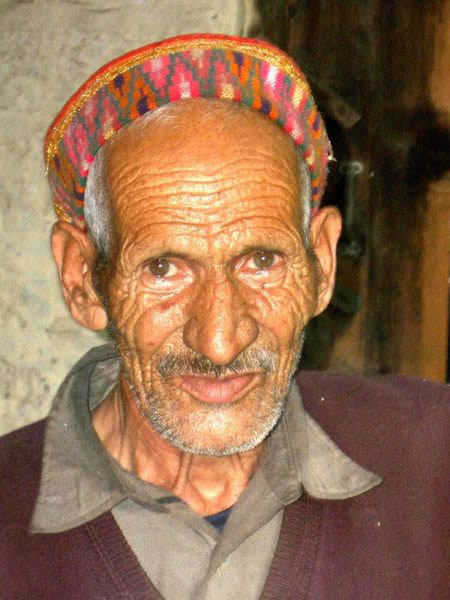
The Discovery of Dalamatia post and the study of Varuna at the time
The discovery of 1st Susa and Babel/Dilmun following the Tipura lead.
The Kashmir Valley
Kashmir is described variously as the paradise on earth, the dream-land, the choicest creation of God, etc. Jehanghir is said to have quoted the following Persian Sher in praise of Kashmir.
Gar Firdaus Bay Roo-e-Zernin-ast Ha;ni;i sto, Hamin asto, Hamin ast.
The same sher is etched in the walls of the Diwan-i-Aam in Red Fort Delhi
which means if there be paradise an where on the earth; it is here, it
is here, it is here! The vale of Kashmir in its sheer beauty and
enchantment surpasses even the imagination. Kashmir is unmatched by any other
country for its pristine loveliness, placid lakes reflecting like a mirror,
the scenic beauty, green meadows laced by gurgling streams, luxurious
houseboats, stately chinar, tall snow capped mountain, the highest golf course
in the world, flowers of many hues and scents and the proverbial beauty of its
maidens.
HISTORY
Kashmir, “The Paradise on
Earth”, is a history in making. Kashmir has a g lorious
past, a painful present and an uncertain future. The history of Kashmir is
well documented and there are ample reminders of the ancient inhabitants of
this valley, still lying around in Kashmir. Mythological tradition has
it that, the valley originally was a huge lake called “Satisar” [land of
Goddess Sati, consort of Lord Shiva], and its waters were blocked near
Varamulla [present town of Baramulla]. Modern
geologists also confirm this myth as true. According to the oldest
manuscript on Kashmir “Nilvat Puran”, in Satisar there lived a demon named
Jalod Bowa who killed and devoured the people of this region. A great saint
named Kashyap, heard about the havoc that this demon was wrecking and
performed penance for a long time. He was blessed by god and was
able to cut the mountain, near Varamulla. This
made it possible for the Satisar Lake to be drained into the plains below, and
the land of Kashmir appeared. The demon was killed and the grateful people
named the valley as "Kashyap-mar" and "Kashyap Pura". Kashmir also implies
"land desicated from water", as it is derived from two words viz., “ka”
(water) and Shimeer (to desicate). Over the years it was ruled by different
ruler including Ashoka the great who founded srinagar & spread buddhism in the
kashmir region
lorious
past, a painful present and an uncertain future. The history of Kashmir is
well documented and there are ample reminders of the ancient inhabitants of
this valley, still lying around in Kashmir. Mythological tradition has
it that, the valley originally was a huge lake called “Satisar” [land of
Goddess Sati, consort of Lord Shiva], and its waters were blocked near
Varamulla [present town of Baramulla]. Modern
geologists also confirm this myth as true. According to the oldest
manuscript on Kashmir “Nilvat Puran”, in Satisar there lived a demon named
Jalod Bowa who killed and devoured the people of this region. A great saint
named Kashyap, heard about the havoc that this demon was wrecking and
performed penance for a long time. He was blessed by god and was
able to cut the mountain, near Varamulla. This
made it possible for the Satisar Lake to be drained into the plains below, and
the land of Kashmir appeared. The demon was killed and the grateful people
named the valley as "Kashyap-mar" and "Kashyap Pura". Kashmir also implies
"land desicated from water", as it is derived from two words viz., “ka”
(water) and Shimeer (to desicate). Over the years it was ruled by different
ruler including Ashoka the great who founded srinagar & spread buddhism in the
kashmir region
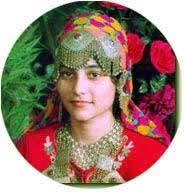
The Banyan Tree and the connection to the tree of Life
http://www.teosofia.com/Mumbai/7508trees.html
An extract that makes that connection
Ashwattha is the mundane tree (or Tree of Life) of the Hindus. It is described as having its roots above and branches below. Its branches represent the external visible world of senses, or visible universe. The leaves are the Vedas or the universe in its intellectual or moral character. The roots represent the Spiritual World and Supreme Being, or First Cause, the Logos. But one has to go beyond the roots to unite oneself with Krishna, the Brahman who is greater than the First Cause and is indestructible. He who is able to cut down this tree with the strong axe of dispassion and go beyond the roots, will not have to incarnate during this "age" of Brahma. Thus, Parabrahmam is the seed, First Cause is the root, Mahat or Universal Soul is the trunk, while the branches are the great egoism. We are asked to cut the tree with an axe of knowledge or secret wisdom. (S.D., I, 406 and 536)
Vishnu, in one of his incarnations, is shown resting under the Banyan tree and there he taught humanity the philosophy and the sciences. Under the shade of this Banyan tree the gurus teach their disciples lessons of immortality and initiate them into the mysteries of life and death. The Banyan tree is called both the "Tree of Knowledge" and the "Tree of Life" (S.D., II, 215). The Secret Doctrine mentions "the ever-living-human-Banyan" which represents a "Wondrous Being" from whom all sages, rishis and hierophants have descended in antiquity. Further:
It is under the direct, silent guidance of this MAHA—(great)—GURU that all the other less divine Teachers and instructors of mankind became from the first awakening of human consciousness, the guides of early Humanity. (S.D., I, 208)
Each man assimilates by self-effort, knowledge and experience, and grows. But as a free-willed being he grows either into a tree of life or a withering tree (black adept).
The symbol of the "Tree" standing for various Initiates was almost universal. Jesus is called "the tree of life," as also all the adepts of the good Law, while those of the left Path are referred to as the "withering trees." (S.D., II, 496)
